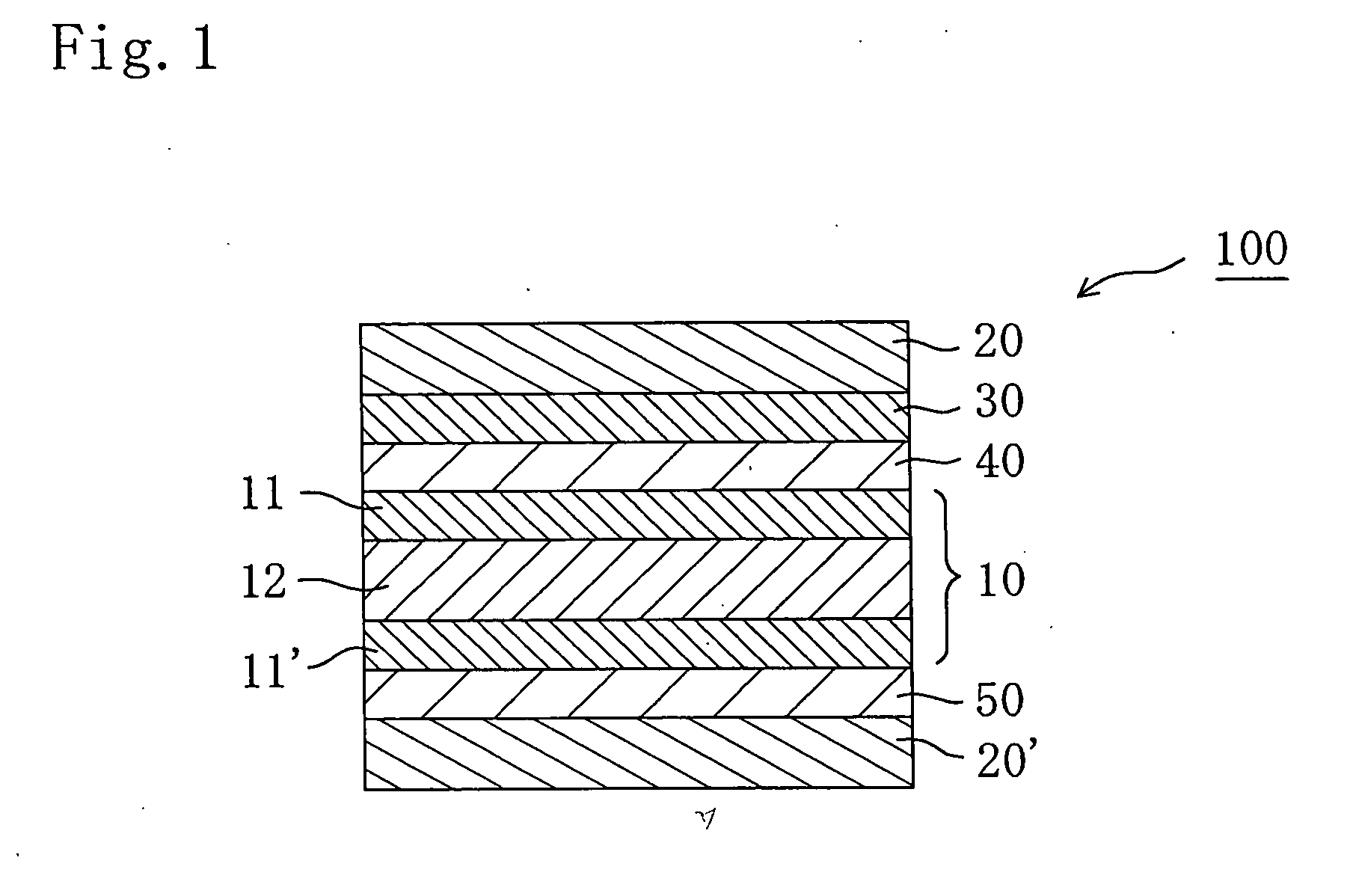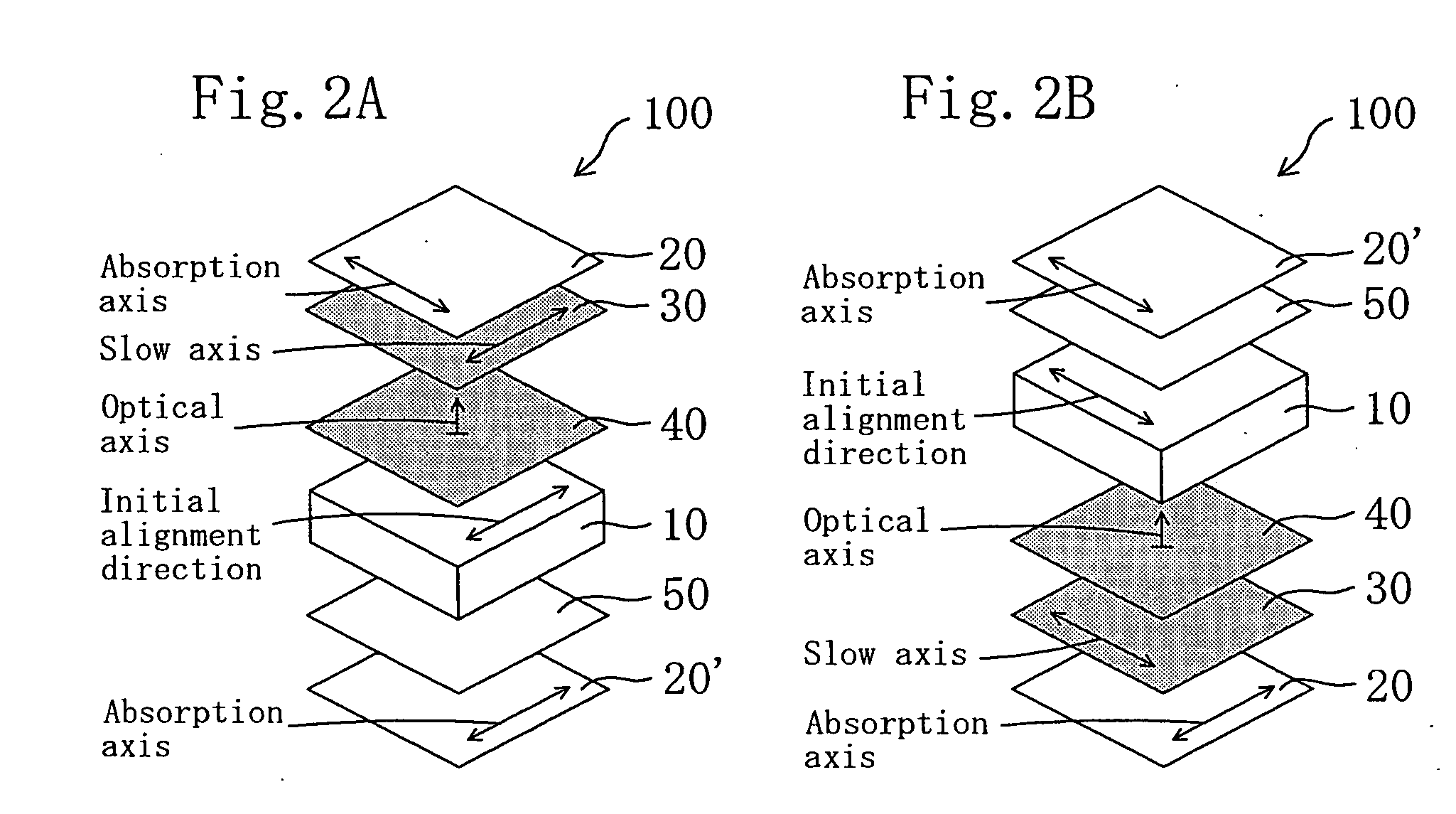Liquid crystal panel and liquid crystal display apparatus
a liquid crystal display and liquid crystal technology, applied in the field of liquid crystal panels, can solve the problems of reducing the contrast ratio, increasing the display color varying phenomenon (also referred to as color shift), and not improving the contrast ratio in an oblique direction. , to achieve the effect of reducing the color shift and increasing the contrast ratio
- Summary
- Abstract
- Description
- Claims
- Application Information
AI Technical Summary
Benefits of technology
Problems solved by technology
Method used
Image
Examples
reference example 1
[0173] A commercially available polymer film “KC12UR” (trade name, thickness of 120 μm, available from Konica Minolta Holdings, Inc.) containing a cellulose ester as-a main component was longitudinally uniaxially stretched 1.30 times in an air-circulating thermostatic oven at 150° C. (temperature measured at a distance of 3 cm from a back surface of the film, temperature fluctuation of ±1° C.) by using a roll stretching machine while a longitudinal direction of the film was held, to thereby produce a retardation film A. Table 1 shows properties of the obtained retardation film A. The polymer film (before stretching) had Re[590] of 12 nm and Rth[590] of 113 rim.
reference example 2
[0174] A polymer film (thickness of 160 μm) was formed through solvent casting by using a cellulose ester (prepared in accordance with Example 1 of JP 2001-188128 A) containing as a main component a mixed organic acid ester having a degree of acetyl substitution of 2.0 and a degree of propionyl substitution of 0.8 in which hydroxyl groups of cellulose are substituted partly by an acetyl group and partly by a propionyl group. The polymer film was longitudinally uniaxially stretched 1.15 times in an air-circulating thermostatic oven at 150° C. (temperature measured at a distance of 3 cm from a back surface of the film, temperature fluctuation of ±1° C.) by using a roll stretching machine while a longitudinal direction of the film was held, to thereby produce a retardation film B. Table 1 shows the properties of the obtained retardation film B. The polymer film (before stretching) had Re[590] of 12 nm and Rth[590] of 113 nm.
reference example 3
[0175] A commercially available polymer film “ZEONOR ZF14-060” (trade name, thickness of 60 μm, glass transition temperature of 136° C., available from Zeon Corporation) containing polynorbornene as a main component was transversely uniaxially stretched 1.8 times in a width direction in an air-circulating thermostatic oven at 140° C. (temperature measured at a distance of 3 cm from a back surface of the film, temperature fluctuation of ±1° C.) by using a tenter stretching machine while a longitudinal direction of the film was held, to thereby produce a retardation film C. Table 1 shows the properties of the obtained retardation film C. The polymer film (before stretching) had Re[590] of 2.7 nm and Rth[590] of 0.5 nm.
Production of Positive C Plate
PUM
| Property | Measurement | Unit |
|---|---|---|
| thickness direction retardation value | aaaaa | aaaaa |
| thickness direction retardation value | aaaaa | aaaaa |
| thickness direction retardation | aaaaa | aaaaa |
Abstract
Description
Claims
Application Information
 Login to View More
Login to View More - R&D
- Intellectual Property
- Life Sciences
- Materials
- Tech Scout
- Unparalleled Data Quality
- Higher Quality Content
- 60% Fewer Hallucinations
Browse by: Latest US Patents, China's latest patents, Technical Efficacy Thesaurus, Application Domain, Technology Topic, Popular Technical Reports.
© 2025 PatSnap. All rights reserved.Legal|Privacy policy|Modern Slavery Act Transparency Statement|Sitemap|About US| Contact US: help@patsnap.com



